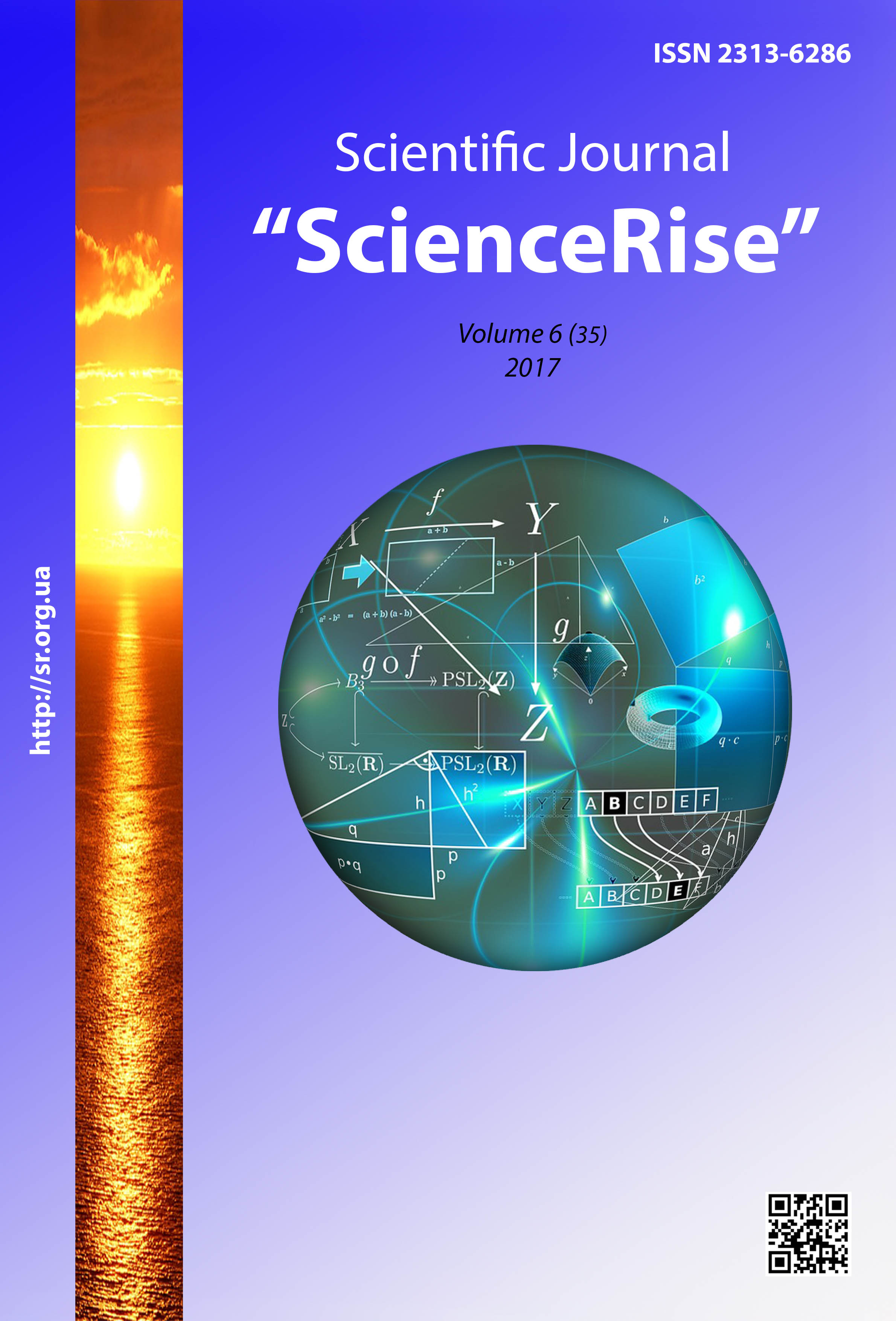Theoretical foundations for formation of the content of special physical training of air forces military personnel of the Armed Forces of Ukraine
DOI:
https://doi.org/10.15587/2313-8416.2017.104285Keywords:
training results, special physical training, military personnel, integration of combat trainingAbstract
The formation of the content of special physical training of military personnel is studied. It is established that in the conditions of the army service the process of special physical training is organized, purposeful and carried out in the general system of combat training. Ways to improve the system of special physical training are defined: standardization of training results, the integration of elements of combat training into a single integrated training system
References
Strategic Defense Bulletin of Ukraine (2016). Decree of the President of Ukraine, No. 240. Available at: http://www.president.gov.ua/documents/2402016-20137
Borodin, Yu. A. (2009). Physical preparation of students in higher soldiery educational establishments engineer-operator to the type. Kyiv: NPU of the name of M. of P. of Dragomanova, 417.
Grischenko, D. S.; Grischenko, D. S., Finogenova, Yu. S., Sukhoradi, G. I. (Eds.) (2016). Conceptual directions of improvement of the system of physical preparation and sport are in Military powers of Ukraine in the conditions of their reformation and development. Materials of meeting of section military-scientific advices after voenno-theoretical problematikoy of Department of defense of Ukraine. Kyiv: Management of physical culture and sport of MOU, NUOU of the name I. Chernyakhovskogo, 232.
Mironov, V. V. (Ed.) (2006). Teoriya i organizaciya fizicheskoy podgotovki voysk (uchebnik for kursantov i slushatele YVIFka). Saint Petersburg: VIFK, 594.
Romanchuk, S. V. (2006). Formation of motivation in physical training and sports engineering cadets of military schools. LSUPT. Lviv, 22.
Finogenov, J., Glazunov, S. (2009). Clarifying the conceptual bases of operation and structure of physical training of the Armed Forces of Ukraine. Scientific Journal of Nat. ped. Univ Dragomanov. Series: Teaching science: reality and prospects, 14, 255–260.
Olhovyy, A. (2013). The concept of professionally directed system of physical training of students. Herald of Chernigov. nat. ped. Univ. Series: Teaching Science. Physical education and sport, 112 (2), 208–211. Available at: http://nbuv.gov.ua/j-pdf/VchdpuPN_2013_112(2)__49.pdf
Ovcharuk, I. S. (Ed.) (2016).The basic terms and elements of the main types of training for army combat system (BARS). Part 1. Odessa: Military Academy, 103.
Shlyamar, I. L. (2015). Improving special physical preparation of military mechanized units Armed Forces of Ukraine. LSUPT. Lviv, 19.
Kyrpenko, V. M. (2014). Optimization of special physical preparation of cadets-pilots during flight training. LSUPT. Lviv, 24.
Balcerzyk, R. (2016). Assessment system in the polish army. Journal of Science of the Gen. Tadeusz Kosciuszko Military Academy of Land Forces, 179 (1), 80–89. doi: 10.5604/17318157.1201741
Romanchuk, S. (2015). Self-educational technologies of the commanders of cadets' units of higher military educational institutionsin the field of physical training and sports. Journal of Physical Education and Sport, 15 (3), 498–501.
Agayev, N. (2014). Psychological problems of soldiers – members of ATO. Bulletin of the MOU, 10, 8–9.
Sergienko, Y., Andreianov, A. (2013). Models of professional readines sofstudent so fhigher military schoolsof the Armed Forces of Ukraine. Physical Education of Students, 6, 66–72.
Goose, O. D. (2012). Formation of psychophysical readiness of military airborne units to the profession during physical training. LSUPT. Lviv, 20.
Verenha, Y. V. (2015). Improvement of physical training of the MIA of Ukraine during professional development. LSUPT. Lviv, 19.
Guidance on physical training in the Armed Forces of Ukraine (NFP-2014) (2014). Kyiv: Ministry of Defense of Ukraine, 158.
Glazunov, S. I. (2003). Express control of special physical readiness of military units of the Army mechanized. NUFViS Ukraine. Kyiv, 20.
Zakorko, I. P. (2001). Physical training in higher educational establishments of Ukraine, taking into account the individual characteristics of students motility. Kyiv, 18.
Jedynak, G. A. (2016). On the improvement of the assessment of physical readiness of the Armed Forces of Ukraine. Physical education, sport and health culture in modern society, 4 (20), 276–280.
Lisowski, V. O., Mihuta, Р. Yu. (2013). Importance of coordination skills essential psycho physical demonstrated competenciesas a military specialists. Physical Education of Students, 6, 38–42.
Hoyong, S., Jongseong, A., Sangwon, L. (2015). Relationship Between Functional Movement Screenand Tactical Performance. Journal of Sport and Human Performance, 3 (4). Available at: https://journals.tdl.org/jhp/index.php/JHP/article/view/75
FM 7-22. Army Physical Readiness Training (2012). Available at: http://apftscore.com/fm7_22.pdf
Army Doctrine Reference Publication ADRP 7-0 Training Units and Developing Leaders (2012). Washington: CreateSpace Independent Publishing Platform, 36. Available at: https://www.amazon.com/Doctrine-Reference-Publication-Training-Developing/dp/1479215759
Too fat to fight: Retired military leaders want junkfood out of America’s schools (2010). Washington: Mission: Readiness, 12.
Barfield, J. P., Anderson, A. (2014). Effect of CrossFit™ on Health-related Physical Fitness: A Pilot Study. Journal of Sport and Human Performance, 2 (1). Available at: https://journals.tdl.org/jhp/index.php/JHP/article/view/jshp.0033.2014
Tretiak, A. S. (2011). Conceptual framework of special physical training prison staff. Bulletin of the Chernihiv National Pedagogical University, 2 (91), 271–274.
Downloads
Published
Issue
Section
License
Copyright (c) 2017 Olexandr Tkachuk, Sergii Palevich, Vitaliy Kyrpenko, Olexander Poddubny

This work is licensed under a Creative Commons Attribution 4.0 International License.
Our journal abides by the Creative Commons CC BY copyright rights and permissions for open access journals.
Authors, who are published in this journal, agree to the following conditions:
1. The authors reserve the right to authorship of the work and pass the first publication right of this work to the journal under the terms of a Creative Commons CC BY, which allows others to freely distribute the published research with the obligatory reference to the authors of the original work and the first publication of the work in this journal.
2. The authors have the right to conclude separate supplement agreements that relate to non-exclusive work distribution in the form in which it has been published by the journal (for example, to upload the work to the online storage of the journal or publish it as part of a monograph), provided that the reference to the first publication of the work in this journal is included.

